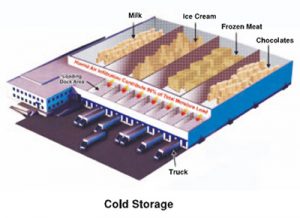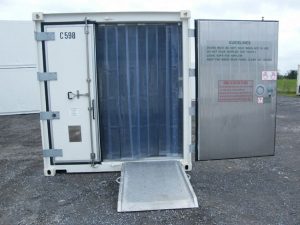Introduction
Cold storage is a crucial aspect of various industries, including food, pharmaceuticals, and data management. It involves preserving items or information at low temperatures to extend their shelf life or ensure their security. There are two primary types of cold storage methods, each serving distinct purposes and industries. In this article, we will delve into the details of these two types: refrigerated storage and cryogenic storage.
Understanding Refrigerated Storage
Refrigerated storage, also known as conventional cold storage, is a widely used method for preserving perishable items such as food, pharmaceuticals, and other sensitive materials. This method involves maintaining temperatures above the freezing point but below room temperature. The goal is to slow down the growth of bacteria and other microorganisms that can cause spoilage, while still keeping the items accessible for regular use.
Key Features and Applications
Refrigerated storage typically operates within the range of 0°C to 10°C (32°F to 50°F). This temperature range inhibits the growth of most bacteria and enzymes responsible for degradation. Here are some common applications of refrigerated storage:
Food Industry: In the food industry, refrigerated storage is used to preserve perishable items like fruits, vegetables, dairy products, and meats. Restaurants, grocery stores, and distribution centers rely on refrigeration to keep products fresh and safe for consumption.

Pharmaceuticals: Many pharmaceutical products, including vaccines, insulin, and certain medications, require specific temperature conditions to maintain their effectiveness. Refrigerated storage ensures that these products remain potent until they reach the end-user.
Biotechnology: Laboratories and research facilities often use refrigerated storage for storing biological samples, reagents, and chemicals. This prevents degradation and maintains the integrity of these substances for future experiments and analyses.
Data Storage: In the realm of information technology, cold storage refers to the storage of data on slower, less accessible devices. While not related to temperature, the concept draws a parallel to the preservation aspect of cold storage by maintaining data for long-term archival purposes.
Exploring Cryogenic Storage
Cryogenic storage involves maintaining extremely low temperatures well below freezing, often using gases like nitrogen, oxygen, or argon as refrigerants. This method is used for items that require preservation at extremely low temperatures, making it suitable for certain scientific, medical, and industrial applications.
Notable Characteristics and Applications
Cryogenic storage operates at temperatures below -150°C (-238°F). The low temperatures slow down molecular motion, making it ideal for preserving items with unique properties. Here are some applications of cryogenic storage:
Medical Field: Cryogenic storage plays a vital role in preserving biological samples such as sperm, eggs, embryos, and even tissues for transplantation. The technique prevents damage from ice crystal formation, allowing these materials to be stored for extended periods.
Superconductivity Research: Certain materials exhibit superconducting properties at ultra-low temperatures. Cryogenic storage provides the environment needed to study and utilize these materials for applications such as magnetic resonance imaging (MRI) machines and particle accelerators.
Space Exploration: Cryogenic storage is crucial for space agencies like NASA, where fuels like liquid oxygen and liquid hydrogen are stored at extremely low temperatures for use in rockets. These fuels provide high energy density and are essential for launching spacecraft.
Food Industry: Cryogenic freezing is used to preserve food items with minimal loss of flavor, texture, and nutritional value. Items like flash-frozen fruits and vegetables retain their quality better compared to traditional freezing methods.
Conclusion
In conclusion, cold storage is an indispensable practice across various industries, and it comes in two primary forms: refrigerated storage and cryogenic storage. While refrigerated storage maintains temperatures above freezing, cryogenic storage operates at ultra-low temperatures. Each method serves distinct purposes, from preserving food and pharmaceuticals to enabling advanced scientific research and space exploration. Understanding the differences between these two types of cold storage is essential for choosing the right method based on the specific requirements of the items or information to be preserved. https://commgen.com.au/


Recent Comments